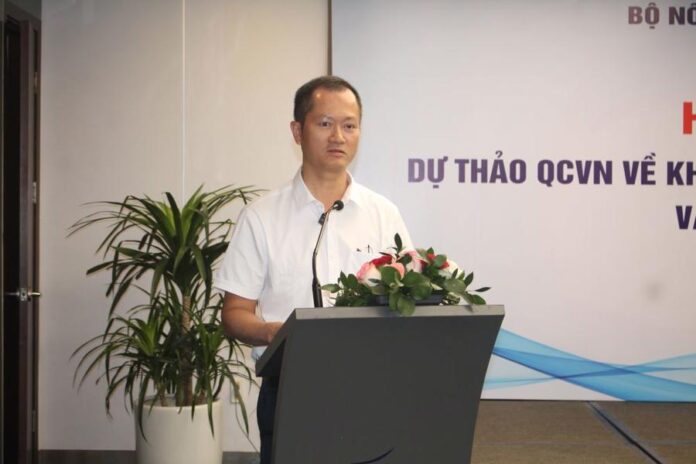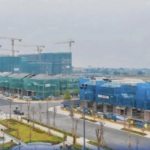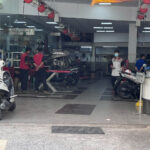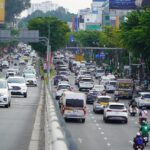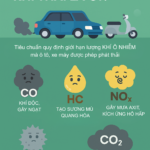On June 3, 2025, the Department of Environment (Ministry of Agriculture and Environment) organized a consultation meeting on the draft National Technical Regulation (QCVN) for vehicle emissions, including motorcycles and scooters, and its implementation roadmap.
The meeting aimed to gather feedback from state management agencies, experts, research institutes, businesses, and relevant organizations on the draft content and assess the feasibility of its actual implementation.
POLICY NEEDS HIGH CONSENSUS
Speaking at the meeting, Mr. Le Hoai Nam, Deputy Director of the Department of Environment, said that currently, there are up to 70 million motorcycles and scooters in use nationwide. With such a large scale, the application of strict emission standards will significantly impact air quality.
Implementing the provisions of the 2020 Law on Environmental Protection to strengthen urban air pollution control and complete the system of National Technical Regulations (QCVN) for vehicle emissions, the Department of Environment is assigned to draft the Circular promulgating the QCVN for vehicle emissions, including motorcycles and scooters, and its implementation roadmap to be submitted to the Minister of Agriculture for issuance.
At the same time, they are also developing a draft Decision on the roadmap for applying the National Technical Regulation for motorcycle and scooter emissions in Vietnam, which will be submitted to the Government for the Prime Minister’s issuance.
“Almost every household owns a motorcycle. Therefore, the policy needs to be carefully constructed with a clear roadmap and high consensus. This has been a consistent view in the policy-making process to avoid shocking the people and to enhance compliance and effectiveness,” emphasized Mr. Nam.

At the meeting, several important pieces of information were announced, notably the postponement of the starting point for motorcycle emission inspections in Hanoi and Ho Chi Minh City to July 1, 2027, six months later than the previous draft. This adjustment considers practical concerns, providing more preparation time for citizens and local governments while demonstrating the government’s determination to control urban air pollution – one of the most critical environmental challenges today.
According to the draft Decision submitted to the Government, the application of emission standards will be implemented in three phases based on the administrative divisions of provinces and cities. Specifically:
- From July 1, 2027: Implementation in Hanoi and Ho Chi Minh City – the two cities bearing the heaviest air pollution burden.
- From July 1, 2028: Expansion to major cities such as Hai Phong, Da Nang, Can Tho, and Hue.
- From July 1, 2030: Nationwide application, with flexibility allowing localities to proactively shorten the implementation time if conditions permit.
Along with this, the emission levels for motorcycles and scooters are also classified according to the year of manufacture. Specifically:
- Level 1 applies to motorcycles produced before 2008 and scooters produced before 2016.
- Level 2 is for motorcycles produced between 2008 and 2016 and scooters produced between 2017 and June 30, 2027.
- Level 3 is for motorcycles produced between 2017 and June 30, 2026.
- Level 4 is for motorcycles produced after July 1, 2026.
From January 1, 2030, all motorcycles circulating in Hanoi and Ho Chi Minh City will be required to meet at least Level 2 emission standards. This is a significant change from the previous draft, which envisaged this roadmap starting in 2032.
CLEAR STANDARDS AND ACCURATE MEASUREMENT METHODS
The new National Technical Regulation in the draft has clearly defined the maximum allowable limits for the basic emission parameters of Carbon Monoxide (CO) and Hydrocarbons (HC) – two gases that directly affect human health. Emission measurements will be taken when the vehicle is idling, following the technical standards TCVN 11215:2015 and ISO 17479:2020.
Units conducting emission tests must be certified as qualified and use standardized equipment as stipulated in QCVN 103: 2024/BGTVT – regulations on vehicle emission testing facilities. This ensures accuracy, objectivity, and synchronization across the system.

The draft Circular also clearly defines responsibilities and the scope of application. The regulation applies to organizations and individuals owning motorcycles and scooters participating in traffic, units conducting emission tests, and relevant state management agencies.
However, specialized vehicles of the Ministry of National Defense and the Ministry of Public Security are excluded from the scope to ensure their specific functions in national defense and security.
Additionally, Hanoi, as a special municipality, will have separate regulations for low-emission zones. In these areas, vehicles must meet stricter emission requirements as per a separate resolution of the Hanoi People’s Council. This paves the way for emission control policies that are specific to the conditions of each area and the need to protect the urban environment.
“Motorcycle emission testing is not just about reducing air pollution but also an important step in modernizing and sustainable urban transportation. This policy will promote the elimination of old and high-emitting motorcycles, increase the demand for new and electric vehicles, raise community awareness about environmental protection, and encourage the development of technical services, inspection, and maintenance.”
Mr. Nguyen To An, Deputy Director of the Department of Registration, Ministry of Transport.
However, experts and delegates at the workshop opined that several issues need further clarification, such as inspection costs, support for low-income earners, technical infrastructure for emission testing, and the mechanism for handling vehicles that do not meet the standards. These aspects need to be concretized in subsequent guiding documents.
Tightening Emissions Testing for Motorcycles
Motorcycles and scooters will need to meet Euro 2 emission standards to be allowed on the roads of Hanoi and Ho Chi Minh City from 2027 onwards.
The Environmental Agency Speaks Out on Emissions Standards for Vehicles in Hanoi and Ho Chi Minh City
The bustling cities of Hanoi and Ho Chi Minh City are in dire need of a greener future. To combat the looming threat of air pollution, it is imperative that these metropolises expedite the implementation of stricter emission standards for automobiles. It is high time that we prioritize the health and well-being of our citizens and our planet.

